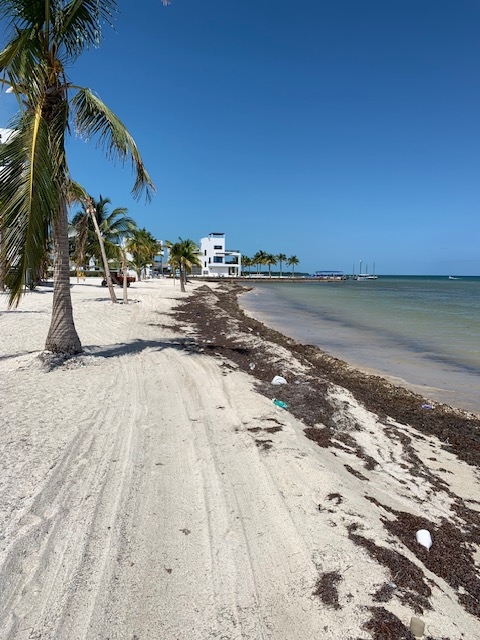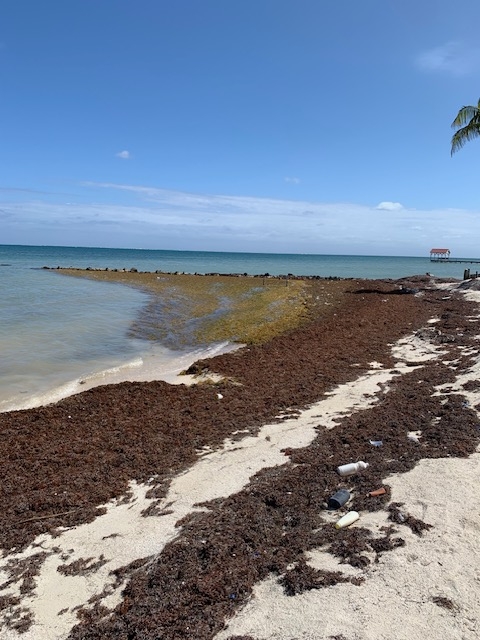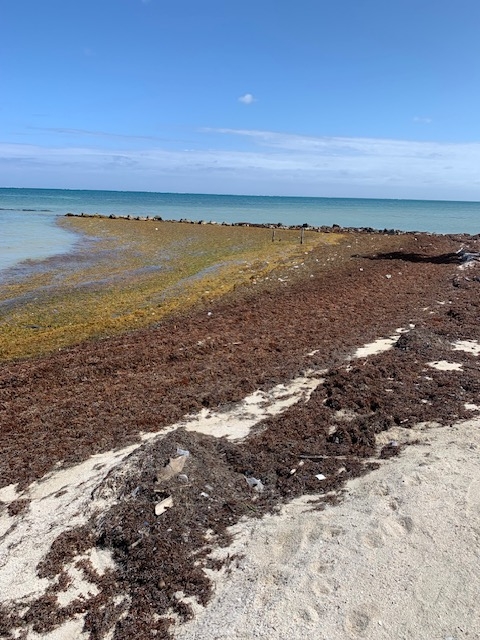Sargassum Solutions
 Sargassum is choking the Caribbean’s white sand beaches, fueling an economic and public health crisis
Sargassum is choking the Caribbean’s white sand beaches, fueling an economic and public health crisis
The Caribbean’s sandy beaches, clear turquoise water and vibrant coral reefs filled with an amazing variety of sea creatures have long been the pride of the islands.
The big three – sun, sea and sand – have made this tropical paradise the most tourism-reliant region in the world. But now, all of that is under threat. The explosive growth of a type of seaweed called sargassum is wreaking havoc on economies, coastal environments and human health across the islands.
The sargassum invasion has worsened since it exploded in the region in 2011. Forecasts and the seaweed already washing up suggest that 2025 will be another alarming year.
Pollution fuels a hazardous algae bloom
What is causing the explosive growth of this algae? Studies have pointed to pollution which the Caribbean region itself has done little to contribute.
Humans are altering the nutrient cycle by releasing fertilizer runoff and industrial wastewater into rivers, which sends phosphates and nitrates down river systems and out into the oceans. These are key nutrients for plant growth. A rapid increase in ranching, logging and agriculture along the Amazon River in South America is one source, sending huge amounts of nutrients washing into the river, which terminates in the Caribbean Sea. Another culprit is the Mississippi River, which carries nutrient-rich effluent from farms and industries into the Gulf of Mexico. The Congo River in Africa also carries pollutants into the ocean from deforestation, and burning forests can deliver nutrients, such as nitrogen, phosphorus and iron, that further fuel algae growth.
These pollutants are swept up by ocean currents. An increase in phosphate and nitrogen water pollution, combined with warming waters, is believed to have supercharged seaweed normally carried by currents from the Sargasso Sea and created the sargassum belt, which persists across the Caribbean today.
Sargassum on land is a public health threat
Sargassum rots quickly when stranded. Within 48 hours, it begins to degrade, releasing hydrogen sulphide and ammonia. At certain concentrations, these gases become not only toxic to the marine environment but also to human health. There have been a growing number of reported cases of neurological, digestive and respiratory disorders associated with the noxious gases being emitted.
The United Nations Environment Program has called for increased international cooperation to understand the causes and impact of sargassum invasions and to find ways to help the countries affected. But so far, the international community has done little to address the pollution at the root of the problem.



View Our Solutions to Manage Sargassum Below:
1. H5-200 Aquatic Weed Harvester
Get more info on any of these systems, please fill out the form below or Contact Us for details: roberthazel@resourcerecoverybelize.com
